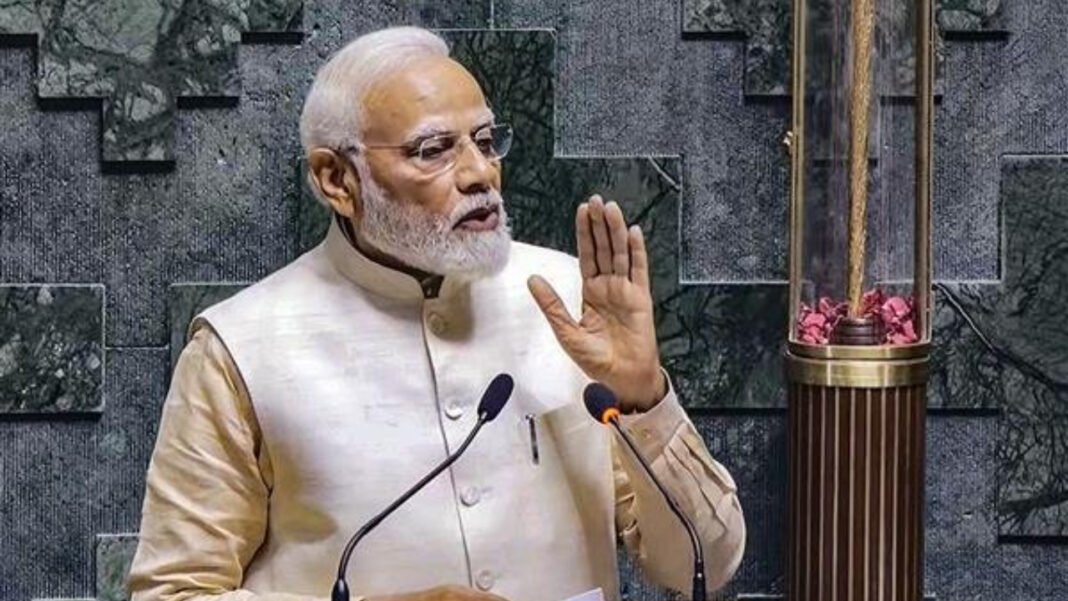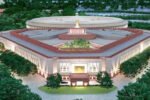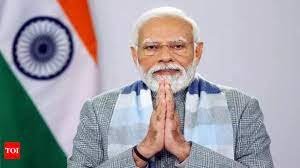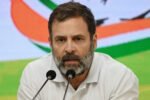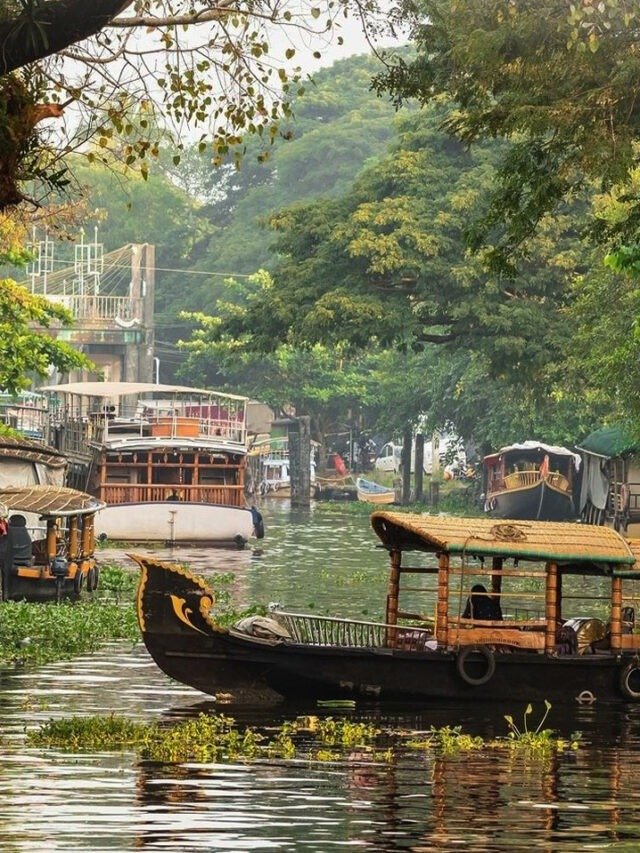NEW DELHI, May 28 (PTI): Prime Minister Narendra Modi on Sunday described the inauguration of the new Parliament building as an “immortalised” moment in the country’s development journey, asserting it will mark the dawn of a self-reliant and developed India which will also inspire the progress of other nations.
In a speech delivered from the grand and cavernous Lok Sabha hall decorated in peacock motif, Modi said the new Parliament reflected the aspirations and resolve of the “new India” to set and work towards achieving new targets.
“Every decision taken here will lay the foundation of India’s glorious future… the way to empower the poor, Dalits, backwards, tribals, divyangs and other marginalised sections goes through here,” he said, adding “each brick and wall of this Parliament building should be dedicated to the welfare of the poor”.
Lauding the building for its reflection of India’s diversity and traditional riches in its architecture, he said the new India is shedding the “slave mentality” which had crept into the country after hundreds of years of bondage.
He equated the 25-year period – from now till the centenary of India’s independence in 2047 – to the similar time gap between Mahatma Gandhi’s non-cooperation movement which had ended in 1922 and the country’s freedom.
Gandhi’s movement led to a “new consciousness” among the masses and filled them with confidence as they devoted themselves to freedom, he said, adding that every citizen should work similarly for a developed India in the next 25 years.
“The new Parliament is a reflection of aspirations and dreams of 140 crore Indians. This is a temple of our democracy that gives a message of India’s resolve to the world. There are a few moments in every nation’s history that are immortalised. Some dates become the indelible signature on the face of time. May 28, 2023 is one such day,” he asserted.
Modi’s address came after he inaugurated the new building this morning at a grand ceremony which included a havan, a multi-faith prayer ceremony and the installation of the Sengol in a special enclosure in the Lok Sabha chamber.
The prime minister said the nine years of his government mark a period of reconstruction and work for the poor’s welfare.
He expressed his satisfaction over this hour of pride, noting that four crore houses and 11 crore toilets for the poor were built during the period.
Over four lakh km of roads to connect villages, more than 50,000 ‘Amrit sarovars’ (pond), and more than 30,000 new ‘Panchayat Bhawans’ were also built, he added.
“From Panchayat Bhawans to Parliament only one inspiration guided us, that is, the development of the nation and its people”, he said.
“When a country like India, full of diversity, with a huge population that tackles various challenges, moves forward with a belief, it inspires many countries of the world.
“Every achievement of India is going to become an achievement for different countries in different parts of the world in the coming days,” he said.
The prime minister asserted that India is not only a democratic nation but is also the mother of democracy.
“Our democracy is our inspiration, our Constitution our resolve. Parliament is the best representative of this inspiration and resolution,” he said, adding that the new Parliament building was a perfect example of the co-existence of the old and new.
Speaking to an audience, which included MPs, chief ministers, members of the higher judiciary and other dignitaries, he invoked India’s ancient glory which included its architecture and town-planning and lamented that after centuries of slavery, Indians were besotted by constructions of other countries.
India today is bending that “stream of ancient glory” to its way again, he asserted.
“Every India is proud today looking at the new Parliament. It represents heritage and architecture, art and skill, culture and the voice of Constitution,” he said, lauding the use of material from different parts of the country in the building to symbolise “Ek Bharat, Shreshtha Bharat”.
With the Opposition criticising the government’s decision to construct the new building, Modi asserted that it was becoming difficult for everyone to do their work in the old building due to various technological and space constraints.
It was being discussed for a decade or two that a new Parliament building is needed, he said, adding it also needed to be considered that more MPs will join Parliament, a development that may occur after delimitation post-2026, till when the number of seats in Lok Sabha and Rajya Sabha is fixed.
About 25 parties attended the event while 20 opposition parties boycotted it, accusing the prime minister of “sidelining” President Droupadi Murmu.
Soon after he arrived in Lok Sabha amidst chants of ‘Modi, Modi’, the messages by President Murmu and Vice President Jagdeep Dhankhar were read out, while Lok Sabha Speaker Om Birla and Rajya Sabha Deputy Chairperson Harivansh also addressed the gathering.
Modi also talked about the ‘Sengol’, saying that it was a symbol of power transfer from the British and had now been given the respect it deserves after being kept in Anand Bhawan in Prayagraj.
“In the Chola empire, it (Sengol) was considered a symbol of the Kartavya path (path of duty), Seva Path (path of service) and Rashtra path (path of the nation),” Modi said.
In his remarks, the prime minister also pointed out that the construction of the new Parliament building gave employment to 60,000 workers and a digital gallery dedicated to them has also been built in the complex.
The building has been completed in about two-and-a-half years at an estimated cost of nearly Rs 1,200 crore.
He said the new Parliament building will be a testament to the dawn of Aatmanirbhar Bharat (self-reliant India).
“It will be a witness to our journey towards a Viksit Bharat (developed India),” Modi said at the event attended by former president Ram Nath Kovind, Chief Ministers Y S Jagan Reddy, Yogi Adityanath, Eknath Shinde and Neiphu Rio, foreign envoys, Parliamentarians and people from different walks of life.
Earlier, dressed in traditional attire, Modi walked into Parliament premises from its Gate No. 1 and was welcomed by Lok Sabha Speaker Om Birla.
Amid Vedic chants by priests from Karnataka’s Shringeri Math, the prime minister performed “Ganapati Homam” to invoke divine blessings.
The prime minister prostrated before the Sengol and sought blessings from high priests of various adheenams in Tamil Nadu with the holy sceptre in hand.
Modi then carried the Sengol in a procession amid tunes of nadaswaram and chanting of Vedic mantras to the new Parliament building and installed it in a special enclosure on the right side of the Speaker’s chair in the Lok Sabha chamber.
The prime minister felicitated with shawls and souvenirs some of the workers for their key role in the construction of the new Parliament building.
The new Parliament building, constructed by Tata Projects Ltd, will also have a grand Constitution Hall to showcase India’s democratic heritage, a lounge for MPs, a library, multiple committee rooms, dining areas and ample parking space.
The triangular-shaped four-storey building has a built-up area of 64,500 square metres.
The building has three main gates — Gyan Dwar, Shakti Dwar, and Karma Dwar.


